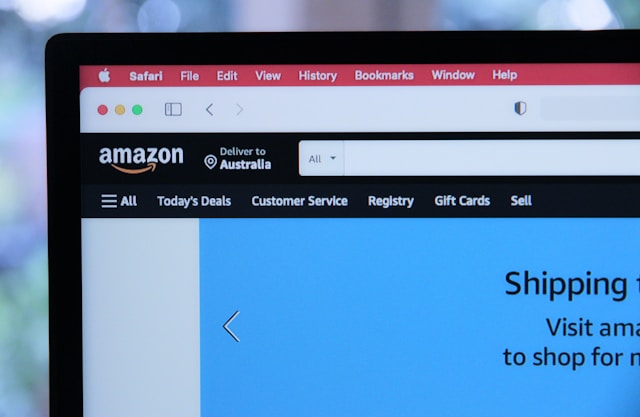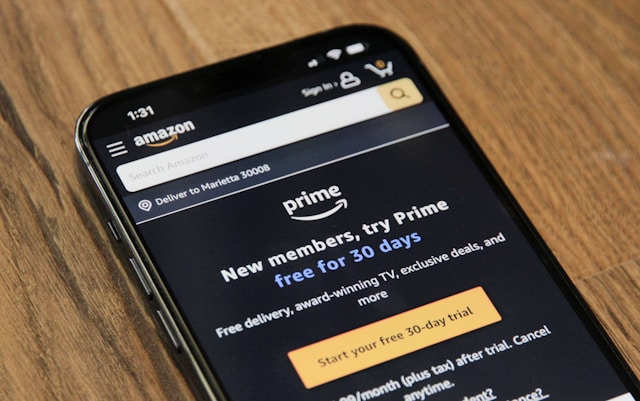Boost Your Conversions with Behavioral Science
In the competitive world of e-commerce, understanding your customers’ behavior is key to success.
Our data-driven approach combines cutting-edge behavioral insights with proven optimization techniques to enhance user experience and increase conversion rates.
However, it’s crucial to apply these principles ethically and responsibly.
Unlock the Power of User Journey Mapping
Understanding how consumers navigate your site is crucial for optimizing their experience. Our user journey mapping process helps you:
Identify Key Touchpoints: Discover the critical moments in your customers’ journey where decisions are made.
Spot Pain Points: Uncover areas where users struggle or abandon their journey.
Optimize for Impact: Make data-informed improvements that significantly enhance user experience and drive conversions.
Leverage Powerful Behavioral Triggers
Tap into the psychology of decision-making to influence purchasing behavior. We help you implement:
Create a sense of urgency by highlighting limited-time offers or low stock levels. This can prompt quicker decision-making and increase conversions.
Examples:
- Amazon’s “Only 3 left in stock – order soon” messages
- Booking.com’s “1 room left at this price” alerts
Showcase customer reviews, ratings, and testimonials to build trust and credibility. Highlight popular products and customer favorites to encourage purchases.
Examples:
- Yelp’s Business Ratings and Reviews
- Netflix’s “Popular on Netflix” and “Trending Now” sections
Use countdown timers and time-sensitive promotions to encourage immediate action. Limited-time discounts and flash sales can drive quick conversions.
Examples:
- Amazon’s “Deal of the Day”
- Airline last-minute deals
Create a sense of urgency by highlighting genuine limited-time offers or real low stock levels. It’s important to ensure that scarcity claims are authentic and not artificially manufactured. Misleading users into thinking products are limited when they are not can damage trust and harm long-term customer relationships.
Example: Amazon.com
Amazon exemplifies the application of behavioral science principles in digital retail. Let’s explore how they leverage key psychological concepts:
- Personalized Recommendations
- One-Click Ordering
- Prime Membership
- Limited-Time Deals
- “Frequently Bought Together” suggestions
- Progress Bars for Free Shipping
- Customer Reviews and Ratings
- “Save for Later” feature
- Dynamic Pricing
- Mobile App optimization
While these strategies have contributed to Amazon’s success, it’s important to consider the ethical implications and potential drawbacks of each approach.

Personalized Recommendations
Amazon uses algorithms to suggest products based on browsing history, purchases, and similar customers’ behavior.
Availability Heuristic: By showing products similar to what customers have viewed or purchased, Amazon makes these items more mentally available, increasing the likelihood of purchase.
Social Proof: “Customers who bought this item also bought…” leverages our tendency to follow others’ actions.
One-Click Ordering
Allows users to make purchases with a single click.
Friction Reduction: Minimizes the steps required to make a purchase, reducing cognitive load and potential drop-off points.
Impulse Buying: The ease of purchase can lead to more spontaneous buying decisions.
Prime Membership
Amazon’s subscription service offers benefits like free shipping and exclusive deals.
Sunk Cost Fallacy: Once customers pay for Prime, they’re more likely to use Amazon to “get their money’s worth.”
Loss Aversion: The fear of missing out on Prime benefits can drive continued subscription and usage.

Limited-Time Deals
Amazon often features time-limited deals, like “Deal of the Day” or “Lightning Deals.”
Scarcity Principle: Limited availability creates a sense of urgency and increases perceived value.
Fear of Missing Out (FOMO): Time-limited offers tap into our aversion to missing opportunities.
“Frequently Bought Together”
Amazon suggests complementary products that are often purchased together.
Bundling Effect: Presenting items as a set can increase the perceived value and likelihood of purchasing multiple items.
Anchoring: The price of the main item serves as an anchor, making additional purchases seem relatively small.
Progress Bars for Free Shipping
Amazon shows how close customers are to qualifying for free shipping.
Goal Gradient Effect: As people get closer to a goal (free shipping), they’re more motivated to reach it.
Endowed Progress Effect: Showing progress towards a goal increases commitment to completing it.
Customer Reviews and Ratings
Amazon prominently displays customer reviews and ratings for products.
Social Proof: Seeing positive reviews from other customers increases trust and likelihood of purchase.
Wisdom of the Crowd: Star ratings provide a quick heuristic for judging product quality.
“Save for Later”
Allows customers to save items they’re interested in but not ready to buy.
Endowment Effect: By saving items, customers begin to feel a sense of ownership, increasing the likelihood of eventual purchase.
Choice Deferral: Provides an option for those not ready to buy, keeping them engaged rather than leaving the site.
Dynamic Pricing
Amazon uses algorithms to adjust prices based on demand, competition, and other factors.
Price Perception: Small fluctuations can create a sense of getting a deal when prices drop slightly.
Anchoring: Previous higher prices serve as anchors, making current prices seem more attractive.
Mobile App
Amazon’s mobile app provides a seamless shopping experience on smartphones.
Habit Formation: The ease of mobile shopping can create habitual browsing and purchasing behaviors.
Availability: Having Amazon always accessible on a mobile device increases the likelihood of purchases.
Ethical Considerations
While leveraging behavioral science can significantly enhance e-commerce performance, it’s crucial to navigate the fine line between ethical influence and manipulation.
Marketers should prioritize transparency, consumer autonomy, and informed consent in their strategies. Ethical marketing not only builds trust but also sustains long-term customer relationships.
Data Privacy and Personalization
Personalization is powerful, but it comes with responsibilities:
- Compliance: Ensure all data collection and usage complies with regulations like GDPR and CCPA.
- Consent: Obtain explicit consent for data collection and personalization efforts.
- Data Minimization: Collect only the data necessary for your marketing objectives.
- Transparency: Clearly communicate how customer data is collected, used, and protected.
- Control: Provide easy-to-use tools for customers to manage their data and preferences.
Cultural Considerations
Behavioral science principles may vary in effectiveness across cultures:
- Individualism vs. Collectivism: Social proof tactics may be more effective in collectivist cultures.
- Uncertainty Avoidance: Cultures with high uncertainty avoidance may respond more to guarantees and detailed product information.
- Time Orientation: The appeal of immediate vs. long-term benefits can differ based on cultural time orientation.
Ready to Optimize Your E-commerce Performance?
Don’t leave your success to chance. Let our team of experts help you leverage the power of behavioral science to transform your e-commerce site into a conversion powerhouse.
